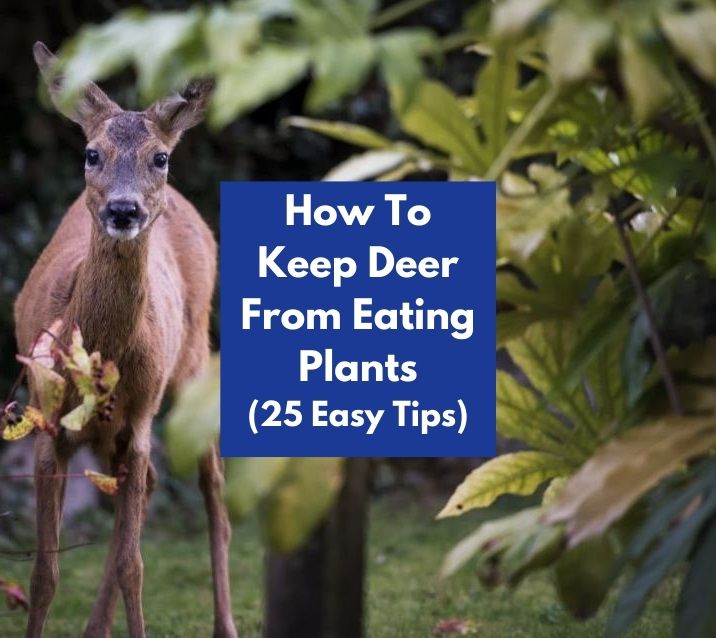Deer are beautiful creatures and seeing one is usually a treat- unless they’re having a feast in your garden! Deer can do a lot of damage to plants, which is why knowing how to keep deer from eating plants is so important.
Keeping deer away from plants isn’t hard, but will take a little time and experimentation.
Luckily we’ve done a lot of the testing and guesswork for you, and have rounded up 25 of the best tips and ways to keep deer out of your garden in today’s guide.
How To Keep Deer From Eating Plants
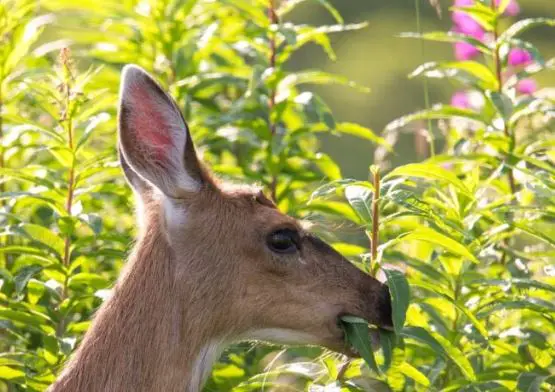
There are a few things to keep in mind when you’re protecting plants from deer: their habits, your scent, repellent options, and when you plant it.
Deer will eat nearly anything if they’re hungry enough, so your main goal is making your garden as least inviting to deer as possible.
Know Their Habits
Deer are selective feeders and creatures of habit.
If they’ve eaten your plants and flowers before, then moving them to a spot away from other greens that may tempt them is a good defense.
If you’re planting something new for the first time, be sure to keep your plants or flowers away from areas that you know deer have been attracted to previously.
You can also place the smaller plants and flowers off the ground where deer cannot reach them easily, like a hanging basket.
Leave Your Scent
Deer have a keen sense of smell that allows them to smell human scent farther than bloodhounds can. and can smell up to six different scents at once.
Deer won’t eat plants if they have a strong human scent on them, so you can use this to your advantage.
Human hair is a great way of keeping your scent on your flowers and plants to prevent deer from eating them.
Dog hair is another good option.
Consider Deer Repellent Options For Plants And Flowers
If you have lots of deer in your area, think twice about leaving things to chance.
There are quite a few options for deer repellents you can use in your garden, which we’ll cover next.
Plant Deer-Resistant Flowers or Plants By Your Garden
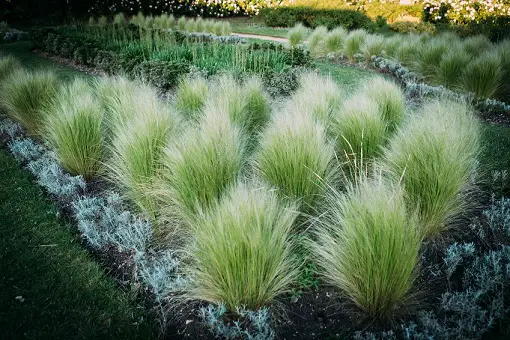
You can surround your deer-susceptible plants with plants and flowers that deer don’t like in order to keep them away.
The strong scents that they give off will deter deer from the tasty scent of your new plants and flowers.
A few plants that repel deer are daffodils, marigolds, iris, oregano, rosemary, lamb’s ear, and ornamental grasses.
There are a few distinct characteristics of plants and flowers that deer really don’t like, which you can use to your advantage.
Plants With Fuzzy Or Hairy Leaves
If you can feel small hairs on the leaves or foliage of a plant, chances are that a deer won’t bother it.
Some plants and flowers with hairy leaves include lamb’s ear, Siberian bugloss, yarrow, poppies, Ageratum, purple top vervain, lady’s mantle, flowering tobacco, and many more.
Plants And Flowers With Strong Scents
Deer let their nose guide them on what to eat, so they are turned off by strong scents.
You can use this to your advantage by planting fragrant plants near others that you want to protect.
Some deer-resistant plants with strong scents include hyssop, Russian sage, dead nettle, calamint, dill, lantana, mountain mint, bee balm, catmint, Artemisia, boxwood, Russian sage, tansy, and Salvias.
Plants With Prickly Leaves
Deer do not like to eat plants that have spines or prickly things on them.
While deer will eat around thorns on roses and other thorny bushes, they’ll generally avoid the hassle if possible.
Spiny-leaved plants include globe thistle, sea hollies, Cardoon, bear’s breeches, and plenty others.
Rough and Leathery Plants
Deer will generally steer clear of foliage that’s hard for them to digest, and that includes plants with leathery leaves or rough textures.
Fibrous, hard-to-digest plants include elephant ears, arrowwood, leatherleaf, peonies, dragonwing begonias, and most irises.
Plants That Are Toxic To Deer
Beware that deer may still occasionally munch on plants that are toxic to them, but they’ll do it less than regular plants.
You can arrange these deer-toxic plants strategically around your garden to help give your other flowers and plants a fighting chance.
Plants that are toxic to deer include ferns, daffodils, poppies, monkshood, spurges, false indigo, and bleeding hearts.
Grasses
Deer are more attracted to flowering plants (known as forbs) and plant shoots rather than grasses.
This is why ornamental grasses are a great item to plant in your garden, as they’ll keep deer away from the other plants and flowers that you’re trying to protect.
Homemade Deer Repellent
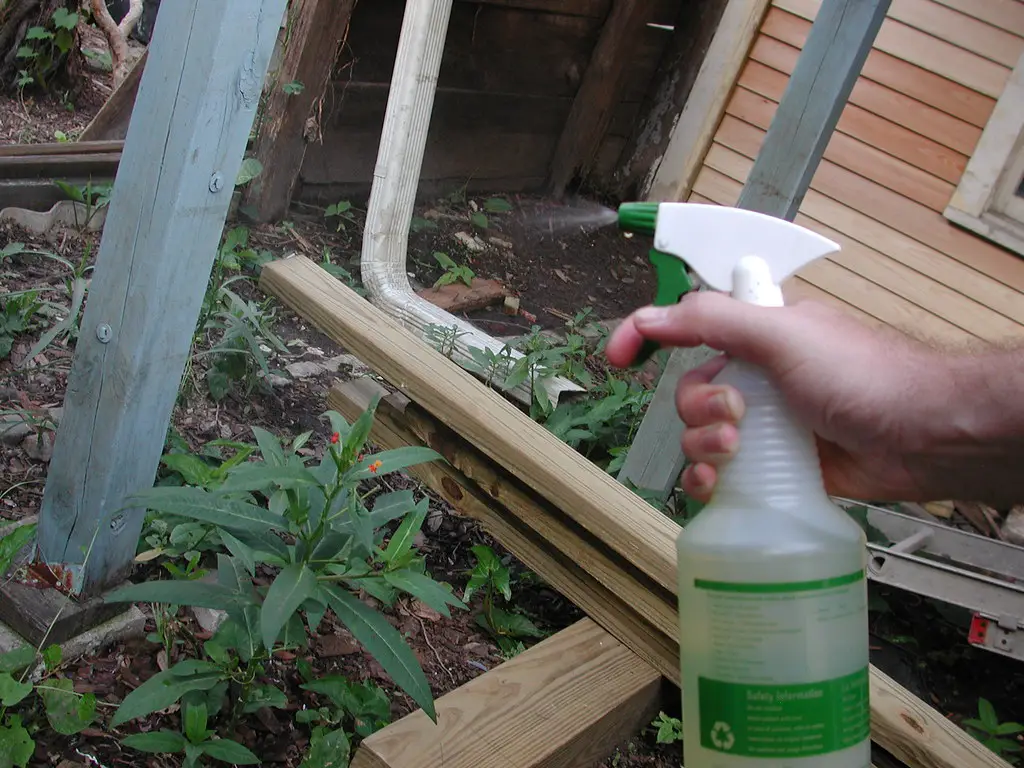
Many gardeners make their own DIY deer repellent using household items and spray it on their plants to keep deer away.
To make your own, simply blend 3 eggs, 3 tbsp milk or yogurt, 3 crushed garlic cloves, 3 tbsp cayenne pepper, and 2-3 cups of water in a blender.
If possible, leave this at room temp for 24 hours so it can “steep”. Caution: this will stink! (That’s the point, though).
Put the homemade deer repellent into a spray bottle and make sure to use plenty of spray on your pansies after it rains or when there’s a lot of morning dew.
Be sure to spray the entire plant.
Once it’s dry you won’t be able to smell it, but the deer sure will, and it’ll keep them from munching on your pansies!
Consider skipping this step if you’ll be eating what you grow!
Mint-Scented Deer Spray
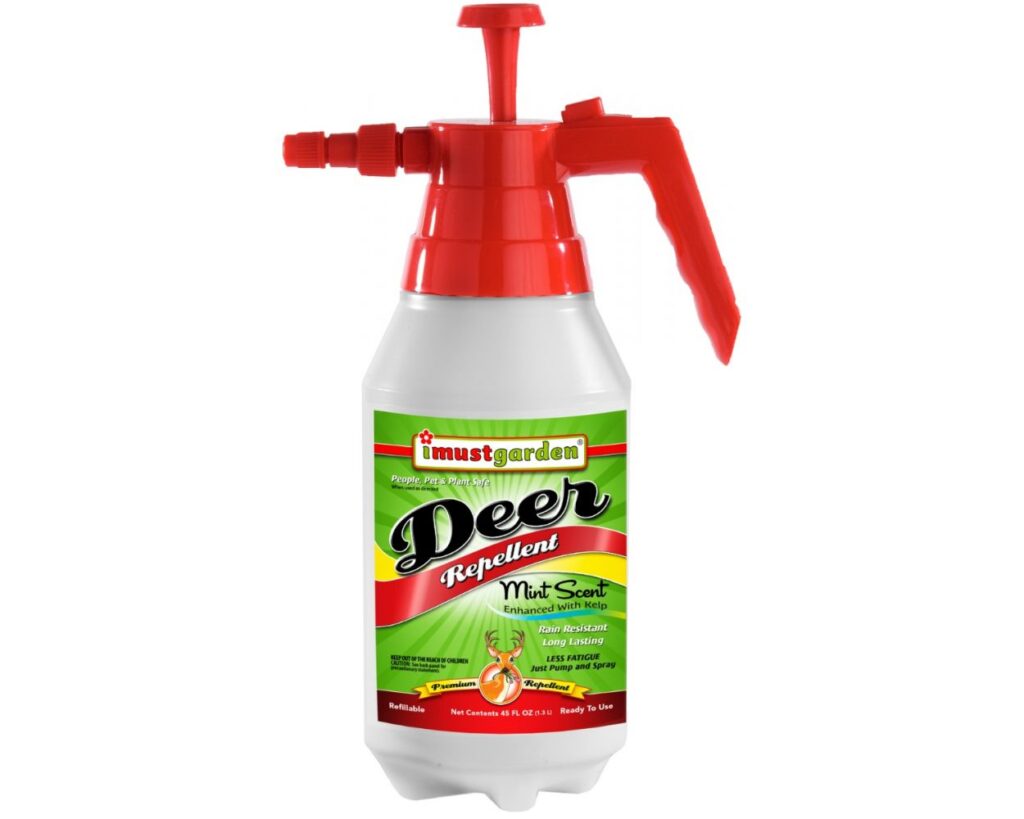
Mint and other strong scents are a turnoff for deer, so using a mint-scented deer spray will help protect your precious plants and flowers.
Hang Irish Spring Soap Nearby
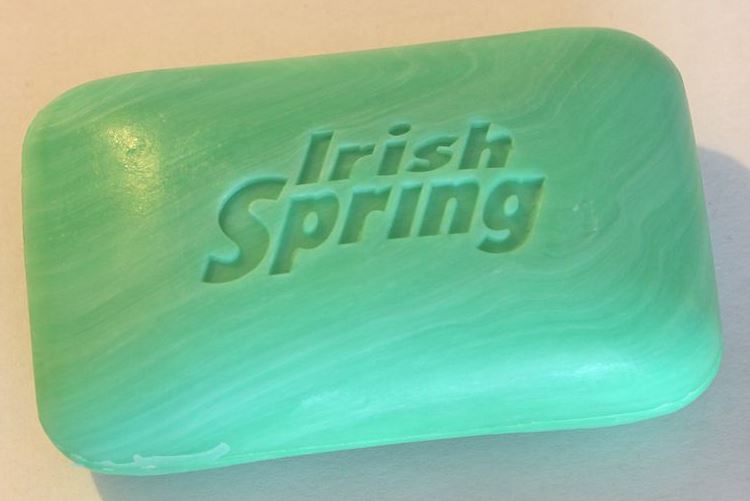
Despite this sounding like an old wives tale, it actually works!
The strong scent of Irish Spring soap can repel deer.
For best results, hang at least one bar from each cherry tree.
You can hang it by putting the soap inside of a stocking, or put a hole through the bar of soap and tie some string around it.
Use Shiny, Bright, & Flashy Objects
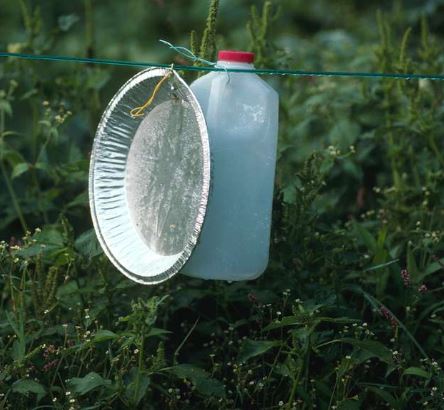
Deer are very sensitive to any type of change in their environment, from sound, smell, or sight.
You can hang old CDs on strings on fishing lines around your garden. Pie tins work great too.
Another alternative is to use metallic streamers or mylar balloons and hang them from the corners of your garden.
The wind will blow these items around and also make noise, which will keep deer away from pansies and violas.
Windchimes
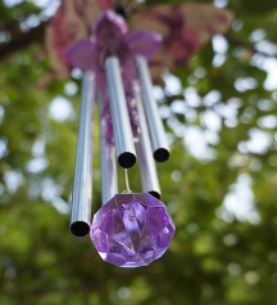
The random sound of wind chimes or bells can keep deer on high alert, so use these to your advantage.
Repel deer from your pansies by hanging wind chimes from trees near your garden.
Deer Netting
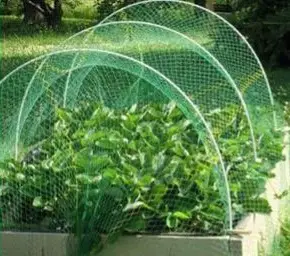
Another option is to use deer netting on your plants, which is more cost-effective and way easier than installing a full-on fence.
This allows you to protect individual plants that might be particularly tempting to deer, and you can set it up in minutes.
Install A Scarecrow Or Lawn Ornaments
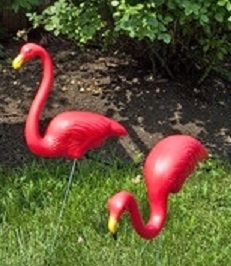
Objects in your garden like a scarecrow, garden gnomes, or pink flamingos will liven up the scenery while also protecting your pansies from being eaten by deer.
Deer don’t realize these objects are harmless to them and will steer clear of your garden when they take notice.
Be sure to move them around occasionally so they’ll stay effective.
Ultrasonic Noisemakers
Motion-activated ultrasonic noisemakers emit high-frequency sounds that deer can hear but humans can’t.
They’re effective at scaring deer away from your plants and flowers in your garden and don’t run afoul of noise ordinances.
Motion Lights
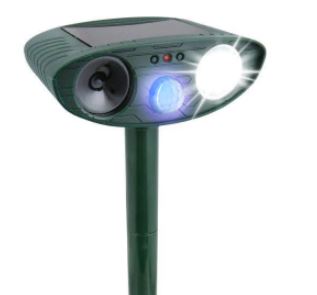
Motion-activated flashing lights will keep deer on their toes and away from your pansies by scaring them off.
Deer will acclimate themselves to deterrents over time, but motion-activated options are never predictable, so they will continue to provide results.
Lighting options also have a dual-benefit of providing you extra security against people and other critters as well.
Motion-Activated Sprinklers
There are motion-activated sprinklers that are often solar-powered so they’re low-maintenance and easy to install.
They’ll give deer a blast of water when they get too close to your plants and flowers, sending them running in the opposite direction.
These work great for other critters, too!
Fencing
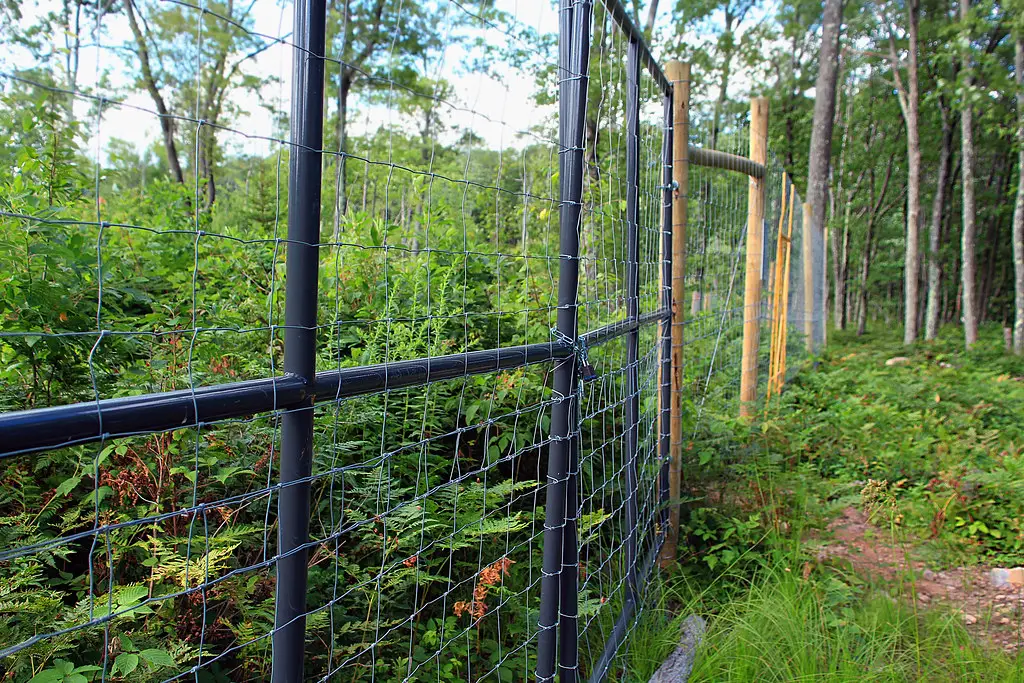
Deer can jump as high as eight feet, so deer fencing for gardens needs to be at least that tall.
Some gardeners choose to make a fenced “dome” in order to keep deer away from their pansies!
Clearly this is a bigger task than the other alternatives we’ve mentioned, so only do this as a last resort.
You may consider an electric fence which doesn’t need to be nearly as tall, but make sure that your local zoning laws allow them.
All of these are great and humane solutions for how to keep deer away from plants.
Let Your Dog Do The Work
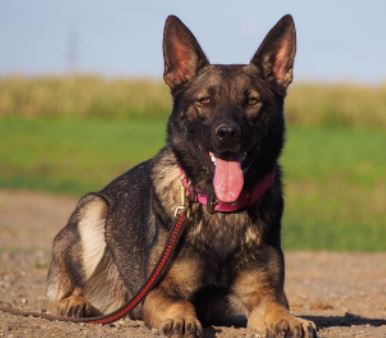
If you have an outside pet, there’s little chance you will have to worry about deer eating your plants.
A dog’s scent, bark, and general presence will be enough to keep deer away from your garden.
Use Multiple Solutions
Usually you’ll need to use a combination of the methods we’ve listed above in order to keep deer away from flowers and plants.
Try combining solutions that each focus on a different sense: sight, smell, sound, and taste in order to keep deer from eating your plants.
Switch Things Up
In addition to trying several different things simultaneously, you’ll also need to change methods out every once in a while.
Deer are persistent and observant, and what works this season may not work the next.
So be sure to change up your sprays, noisemakers, and swap out your scarecrows or other physical items to keep deer out.
How To Keep Deer From Eating Flowers And Plants By Season
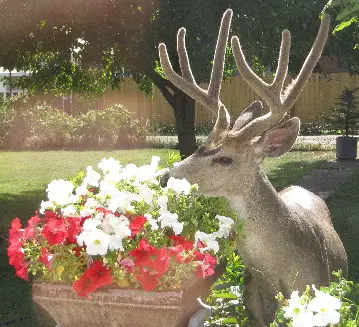
There will be different factors that affect how you should go about keeping deer from eating flowers and plants based on the season.
This has a lot to do with deer mating season and how it affects their behavior, eating habits, and gathering patterns.
Let’s cover each season below.
Keeping Deer Away From Plants In Spring
Deer are usually hungriest in spring because food sources are most scarce in fall and winter.
Additionally, deer are attracted to tender leaves and buds, and spring is prime time for this.
Expect deer to give you the most trouble in spring, so be sure to step it up with your deer repellent sprays and other deterrents we’ve listed above.
Keeping Deer Away From Flowers And Plants In Summer
Your low-growing plants are most at-risk in summer because the typical vegetation and foliage that deer prefer gets burned off in fields due to the hot summer sun.
Be sure to use deer netting, sprays, and motion-activated deterrents to keep deer from eating plants in summer.
Keeping Deer Away From Your Garden In Fall
Fall marks the start of mating season for deer, which means that you’ll see them gathering in larger groups.
Large groups of deer can spell lots of trouble for your plants, flowers, and trees if they’re not protected properly!
Many flower varieties will slow down on blooming and will be less susceptible to hungry deer, but will still need some protection.
Trees are especially vulnerable during this time, as bucks will scrape their antlers on tree bark to remove the velvet they grew during summer.
Visual and sound-based deterrents will work well on groups of deer, so rely heavily on those to protect your flowers, plants, and trees from deer during fall.
Keeping Deer Away From Trees, Plants, and Flowers In Winter
Your trees and evergreen plants will be the prime targets for deer in winter, so pay extra attention to them.
If a non-blooming flower or plant has woody shoots, give those extra protection too, as deer are looking anywhere for a meal when their usual feeding grounds are covered with snow and the foliage is gone.
How To Keep Deer From Eating Plants: Wrapping Things Up
As we’ve covered, there’s plenty of easy and affordable ways to keep deer away from your plants and flowers.
Just be sure to mix it up and try a few different methods, and rotate them throughout the year for the best results.
What are your favorite ways to keep deer away from plants? Let us know in the comments below.

